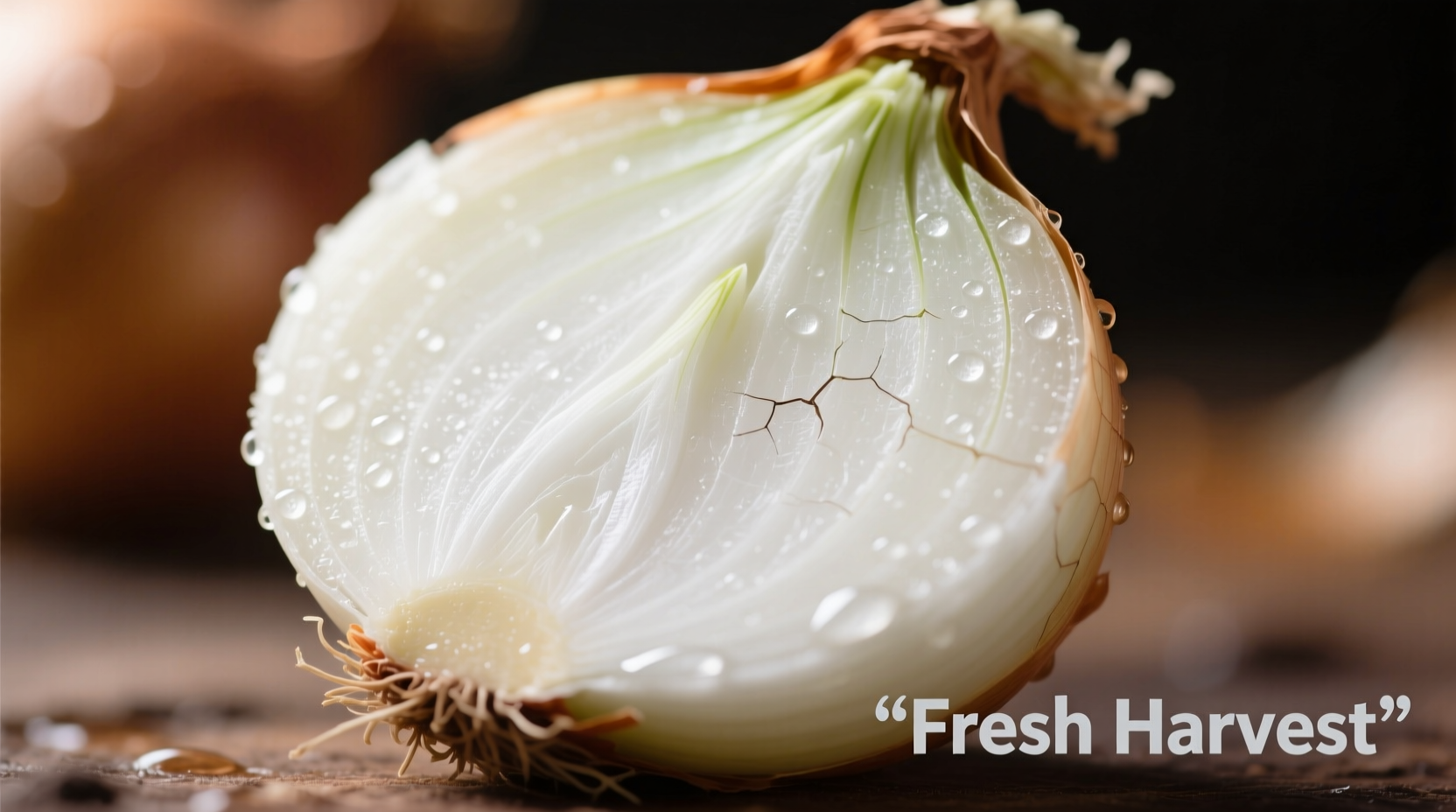Understanding the exact calorie content of white onions helps you make informed dietary choices while enjoying their distinctive sharp flavor. Unlike many vegetables where nutritional values vary significantly by preparation method, raw white onions maintain consistent calorie counts whether sliced, diced, or used whole in recipes.
Exact Calorie Count: Verified by USDA Standards
According to the USDA FoodData Central database (Release 2024), raw white onions contain 40 calories per 100 grams. This precise measurement comes from laboratory analysis of multiple onion samples, ensuring accuracy for nutrition tracking. The calorie count remains consistent across commercially available white onions when measured by weight rather than size.
| White Onion Measurement | Calories | Carbohydrates (g) | Fiber (g) |
|---|---|---|---|
| 100 grams (raw) | 40 | 9.3 | 1.7 |
| Medium onion (110g) | 44 | 10.2 | 1.9 |
| 1 cup chopped (160g) | 64 | 14.9 | 2.7 |
This nutritional consistency makes white onions particularly valuable for meal preppers and those following specific dietary protocols. Unlike starchy vegetables where cooking methods dramatically alter calorie density, white onions maintain their nutritional profile whether raw in salads or caramelized in cooking.
Complete Nutritional Profile Beyond Calories
White onions offer more than just low calories—they deliver essential nutrients that contribute to overall health. A medium white onion provides:
- Vitamin C: 11% of your daily recommended intake
- Vitamin B6: 5% of daily value
- Manganese: 6% of daily value
- Folate: 4% of daily value
- Potassium: 3% of daily value
These nutrients work synergistically to support immune function, cellular metabolism, and cardiovascular health. The natural sulfur compounds in white onions also contribute to their distinctive flavor while providing anti-inflammatory benefits documented in research published in Molecules journal.

White Onion vs. Other Varieties: Calorie Comparison
Many home cooks wonder how white onions compare nutritionally to yellow or red varieties. The differences are minimal but worth noting for precise dietary tracking:
| Onion Type | Calories per 100g | Sugar Content (g) | Distinctive Qualities |
|---|---|---|---|
| White Onion | 40 | 4.2 | Sharp flavor, crisp texture, best for salsas and raw applications |
| Yellow Onion | 42 | 4.7 | Sweetens when cooked, versatile for cooking |
| Red Onion | 40 | 4.3 | Milder raw flavor, vibrant color, good for salads |
| Shallot | 72 | 13.3 | Higher sugar content, delicate flavor |
The slight variations in sugar content explain minor calorie differences between varieties. White onions contain marginally less sugar than yellow onions, making them the absolute lowest-calorie option among common onion varieties. This difference becomes significant when using large quantities in recipes.
Practical Meal Planning Applications
Knowing the exact calorie content helps you incorporate white onions strategically in various dietary approaches:
For Weight Management
Add ½ cup chopped white onion (32 calories) to meals for volume and flavor without significant calorie impact. Their high water content (89%) creates satiety while contributing minimal calories—making them ideal for volume eating strategies.
For Low-Carb and Keto Diets
With 9.3g net carbs per 100g, white onions fit within moderate low-carb protocols but require portion control in strict keto diets. Substitute with green onions (4.7g net carbs per 100g) when following very low-carb regimens.
For Blood Sugar Management
The glycemic load of white onions is exceptionally low at 1.6 per medium onion. Their chromium content may actually help improve insulin sensitivity according to research from the National Center for Complementary and Integrative Health.
When Calorie Counts Might Vary
Several factors can slightly alter the calorie content of white onions in real-world usage:
- Size variations: Commercial "medium" onions range from 100-120g, creating a 4-8 calorie difference
- Preparation method: Caramelizing concentrates natural sugars slightly through water evaporation
- Storage conditions: Older onions may lose moisture, increasing calorie density per gram
- Cooking with fats: The primary calorie increase comes from added oils or butter during cooking
For precise tracking, weigh onions before preparation rather than relying on size descriptors. The USDA database specifies that cooking without added fats changes calorie density by less than 5% due to water loss.
Common Misconceptions About Onion Calories
Several myths persist about onion nutrition that deserve clarification:
- "Raw onions have more calories than cooked" - False. Cooking without added fats slightly concentrates calories through water loss, but the difference is negligible for typical serving sizes
- "White onions are higher in sugar than other varieties" - False. White onions actually contain slightly less sugar than yellow onions
- "Onions spike blood sugar" - Misleading. While onions contain carbohydrates, their low glycemic load makes them suitable for most blood sugar management plans
Maximizing Nutritional Benefits
To get the most nutritional value from white onions while maintaining their low-calorie profile:
- Use raw in salsas and salads to preserve vitamin C content
- Cook with minimal oil—try water-sautéing to keep calorie counts low
- Pair with healthy fats like avocado to enhance absorption of fat-soluble compounds
- Use the entire onion including outer layers which contain concentrated antioxidants
Professional chefs often employ the "resting period" technique—chopping onions and letting them sit for 10 minutes before use. This allows beneficial sulfur compounds to fully develop, enhancing both flavor and potential health benefits as documented in studies from the Journal of Agricultural and Food Chemistry.











 浙公网安备
33010002000092号
浙公网安备
33010002000092号 浙B2-20120091-4
浙B2-20120091-4